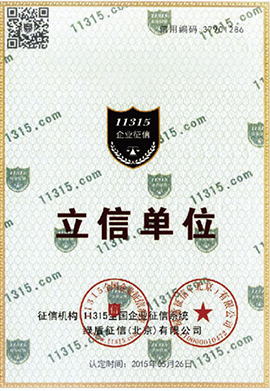- Arabic
- French
- Russian
- Spanish
- Portuguese
- Turkish
- Armenian
- English
- Albanian
- Amharic
- Azerbaijani
- Basque
- Belarusian
- Bengali
- Bosnian
- Bulgarian
- Catalan
- Cebuano
- Corsican
- Croatian
- Czech
- Danish
- Dutch
- Afrikaans
- Esperanto
- Estonian
- Finnish
- Frisian
- Galician
- Georgian
- German
- Greek
- Gujarati
- Haitian Creole
- hausa
- hawaiian
- Hebrew
- Hindi
- Miao
- Hungarian
- Icelandic
- igbo
- Indonesian
- irish
- Italian
- Japanese
- Javanese
- Kannada
- kazakh
- Khmer
- Rwandese
- Korean
- Kurdish
- Kyrgyz
- Lao
- Latin
- Latvian
- Lithuanian
- Luxembourgish
- Macedonian
- Malgashi
- Malay
- Malayalam
- Maltese
- Maori
- Marathi
- Mongolian
- Myanmar
- Nepali
- Norwegian
- Norwegian
- Occitan
- Pashto
- Persian
- Polish
- Punjabi
- Romanian
- Samoan
- Scottish Gaelic
- Serbian
- Sesotho
- Shona
- Sindhi
- Sinhala
- Slovak
- Slovenian
- Somali
- Sundanese
- Swahili
- Swedish
- Tagalog
- Tajik
- Tamil
- Tatar
- Telugu
- Thai
- Turkmen
- Ukrainian
- Urdu
- Uighur
- Uzbek
- Vietnamese
- Welsh
- Bantu
- Yiddish
- Yoruba
- Zulu
Lap . 06, 2024 01:21 Back to list
Understanding the Basics of V-Belt Transmission Systems in Machinery Applications
Understanding V-Belt Transmission Principles and Advantages
V-belt transmission is a crucial component in mechanical engineering, commonly utilized in various industrial machines, automotive engines, and household appliances. This system is designed to transfer rotational motion and power between two or more shafts, ensuring efficient operation while reducing maintenance costs. This article delves into the underlying principles, types, and advantages of V-belt transmissions, highlighting their significance in modern machinery.
Principle of Operation
The V-belt is a type of flexible belt featuring a trapezoidal cross-section that fits into matching grooves of pulleys. When the driving pulley rotates, it causes the belt to move, which in turn rotates the driven pulley. The design of the V-belt ensures that it remains securely seated in the grooves, maximizing frictional engagement while minimizing slippage. This engagement translates to higher efficiency in power transmission, allowing machines to operate with reduced energy losses.
One of the critical aspects of V-belt transmission is its ability to accommodate the misalignment of shafts. Despite slight changes in alignment during operation, the V-belt maintains its position in the pulley grooves, ensuring consistent performance. The tension in the belt can also be adjusted, impacting its grip on the pulleys and, consequently, the system's overall efficiency.
Types of V-Belts
V-belts are available in several designs, each tailored to specific applications. The most common types include
1. Classical V-Belts These are the traditional belts used in various machines. They come in standard dimensions and are suitable for a wide range of applications.
2. Narrow V-Belts Designed for high-speed applications, narrow V-belts offer increased flexibility and higher power transmission capabilities.
3. Variable Speed V-Belts These belts can adjust their length, making them ideal for applications where speed variability is essential.
4. Cogged V-Belts Featuring notches on the inner surface, cogged V-belts reduce bending resistance, allowing for easier operation around smaller pulleys.
v belt transmission

Advantages of V-Belt Transmission
The V-belt transmission system boasts several advantages over other power transmission methods
1. Efficiency V-belts are highly efficient, with power transmission efficiency often exceeding 95%. This efficiency minimizes energy consumption and reduces operational costs.
2. Simplicity The design of V-belt systems is straightforward, making them easier to install and maintain compared to complex gear systems or chain drives.
3. Flexibility V-belts can adapt to varying operational conditions, accommodating changes in load without significant efficiency losses.
4. Vibration Dampening V-belts provide a cushion effect that helps absorb shocks and vibrations, which can enhance the lifespan of connected machinery.
5. Lower Noise Levels V-belt transmissions generally operate more quietly than chain drives or gear systems, contributing to a more pleasant working environment.
6. Cost-Effectiveness The initial investment and maintenance costs for V-belt systems tend to be lower than those for alternative transmission systems, making them a popular choice for many industries.
Conclusion
In summary, V-belt transmission systems play an indispensable role in the efficient operation of a broad range of machines. Their straightforward design, coupled with high efficiency and adaptability, makes them an excellent choice for many applications. Understanding their operation principles, types, and advantages can aid engineers and technicians in selecting the right system for their specific needs, ultimately enhancing productivity and reducing costs. As technology evolves, the V-belt remains a cornerstone of power transmission in numerous fields, demonstrating its reliability and effectiveness.
-
Korean Auto Parts Timing Belt 24312-37500 For Hyundai/Kia
NewsMar.07,2025
-
7PK2300 90916-T2024 RIBBED BELT POLY V BELT PK BELT
NewsMar.07,2025
-
Chinese Auto Belt Factory 310-2M-22 For BMW/Mercedes-Benz
NewsMar.07,2025
-
Chinese Auto Belt Factory 310-2M-22 For BMW/Mercedes-Benz
NewsMar.07,2025
-
90916-02660 PK Belt 6PK1680 For Toyota
NewsMar.07,2025
-
drive belt serpentine belt
NewsMar.07,2025

